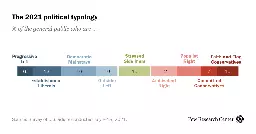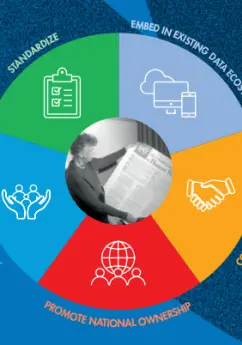Search
A Human Rights-Based Approach to Content Governance
> The question of how social media platforms can respect the freedom of expression rights of users while also protecting others from harm is one of the most pressing challenges of our time. Taking a human rights-based approach to this challenge will help ensure alignment with internationally agreed norms and consistency across borders—but what does a human rights-based approach to content mean in practice? We believe that the elements described in this paper constitute the foundations of a human rights-based approach to content governance. We have arrived at these elements by combining the UN Guiding Principles on Business and Human Rights (UNGPs) with a consideration of the various human rights principles, standards, and methodologies upon which the UNGPs were built. We believe that a human rights-based approach to content governance can be segmented into four parts: > 1. Content policy—statements about what content is and is not allowed on a social media platform, as well as about the visibility of content. > 2. Content policy implementation—how content decisions are executed in practice. > 3. Product development—how new features, services, and functionalities are introduced and evolve. > 4. Tracking and transparency—how the outcomes and effectiveness of a human rights-based approach is measured and communicated. Further, we believe that a special focus on engagement with affected stakeholders and the needs of vulnerable groups is essential across all four parts.
> There are two important features to highlight about these four parts taken in combination.
> First, these four parts constitute a robust framework of ongoing human rights due diligence that enable content decisions to be made thoughtfully, deliberately, and grounded upon rights-based analysis, rather than “on the go” or according to the whim of the moment. They emphasize that process matters as much as the decision itself— and that while different companies may reach different conclusions, content decisions should be intellectually consistent, defensible on human rights grounds, and conveyed transparently.
> Second, these four parts encompass more than just what content is and is not allowed on a platform—our approach assumes that international human rights law provides an overall framework for decision-making and action, not simply a “copy and paste” set of content rules for companies to follow.
Beyond Red vs. Blue: The Political Typology: Even in a polarized era, deep divisions in both partisan coalitions
Pew Research Center’s political typology provides a roadmap to today’s fractured political landscape. It segments the public into nine distinct groups, based on an analysis of their attitudes and values.

> This is the Center’s eighth political typology since 1987, but it differs from earlier such studies in several important ways. It is the first typology conducted on Pew Research Center’s nationally representative American Trends Panel, which provides the benefit of a large sample size and the ability to include a wealth of other political data for the analysis, including the Center’s validated voter study.
> The four Democratic-oriented typology groups highlight the party’s racial and ethnic diversity, as well as the unwieldy nature of the current Democratic coalition. (For complete descriptions of all nine typology groups see Chapters 3-11; for profiles of the Democratic and Republican coalitions see Chapters 1 and 2 of this report.)
> They include two very different groups of liberal Democrats: Progressive Left and Establishment Liberals. Progressive Left, the only majority White, non-Hispanic group of Democrats, have very liberal views on virtually every issue and support far-reaching changes to address racial injustice and expand the social safety net. Establishment Liberals, while just as liberal in many ways as Progressive Left, are far less persuaded of the need for sweeping change.
> Two other Democratic-aligned groups could not be more different from each other, both demographically and in their relationship to the party. Democratic Mainstays, the largest Democratic-oriented group, as well as the oldest on average, are unshakeable Democratic loyalists and have a moderate tilt on some issues. Outsider Left, the youngest typology group, voted overwhelmingly for Joe Biden a year ago and are very liberal in most of their views, but they are deeply frustrated with the political system – including the Democratic Party and its leaders.
> The four Republican-oriented groups include three groups of conservatives: Faith and Flag Conservatives are intensely conservative in all realms; they are far more likely than all other typology groups to say government policies should support religious values and that compromise in politics is just “selling out on what you believe in.” Committed Conservatives also express conservative views across the board, but with a somewhat softer edge, particularly on issues of immigration and America’s place in the world. Populist Right, who have less formal education than most other typology groups and are among the most likely to live in rural areas, are highly critical of both immigrants and major U.S. corporations.
> Ambivalent Right, the youngest and least conservative GOP-aligned group, hold conservative views about the size of government, the economic system and issues of race and gender. But they are the only group on the political right in which majorities favor legal abortion and say marijuana should be legal for recreational and medical use. They are also distinct in their views about Donald Trump – while a majority voted for him in 2020, most say they would prefer he not continue to be a major political figure.
> The only typology group without a clear partisan orientation – Stressed Sideliners – also is the group with the lowest level of political engagement. Stressed Sideliners, who make up 15% of the public but constituted just 10% of voters in 2020, have a mix of conservative and liberal views but are largely defined by their minimal interest in politics.
Federated Moderation: Towards Delegated Moderation?
Introduction In Improving fediverse culture and social behavior along the way I introduced two ideas, that are I think interesting enough to warrant a separate thread. The brainstorm will start in the Lemmy Fediverse Futures ideation space, and elaborated here (if there’s interest). See Lemmy: https...

> Why would you want to delegate moderation:
> Temporarily, while looking for new mods and admins. When an instance is under attack by trolls and the like, ask extra help When there is a large influx of new users
A Human Rights-Based Approach to Social Media Platforms
Rikke Frank Jørgensen considers what a human rights-based approach to social media platforms might look like in practice, highlighting the challenges and possibilities of applying international law to the regulation of online spaces.

> In terms of human rights, social media platforms have a huge impact on how an individual may express, search for, and encounter information. Individuals may be subjected to discrimination through or by the platforms, or have their personal data and privacy restricted. However, as private companies they are not bound by human rights law, unless human rights standards are translated into national regulation. Such translation has happened in many areas of life—workers’ rights, protection of children, environmental protection, protection of journalists and press freedom, for example—but there is still no regulation that stipulates the role and responsibility of tech giants that have reached such a size and volume that their impact on individual speech, public debate, discrimination, and privacy may in many contexts be more significant than that of the state itself.
The 'Shared Psychosis' of Donald Trump and His Loyalists
Forensic psychiatrist Bandy X. Lee explains the outgoing president’s pathological appeal and how to wean people from it

>“Shared psychosis”—which is also called “folie à millions” [“madness for millions”] when occurring at the national level or “induced delusions”—refers to the infectiousness of severe symptoms that goes beyond ordinary group psychology. When a highly symptomatic individual is placed in an influential position, the person’s symptoms can spread through the population through emotional bonds, heightening existing pathologies and inducing delusions, paranoia and propensity for violence—even in previously healthy individuals. The treatment is removal of exposure.
China strengthens environmental protection measures for Yangtze River – WaterBriefing Global
China is stepping up stricter supervision of 3 key ecological problems aimed at protecting biodiversity, addressing climate change and enforcing the fishing ban along the Yangtze River, environmental authorities said this week.
By 2022, the country will extend its supervision to cover all provincial regions, related government departments under the administration of the State Council and state-owned enterprises in the second round of environmental inspection tour, said Liu Youbin, spokesperson for China’s Ministry of Ecology and Environment.

